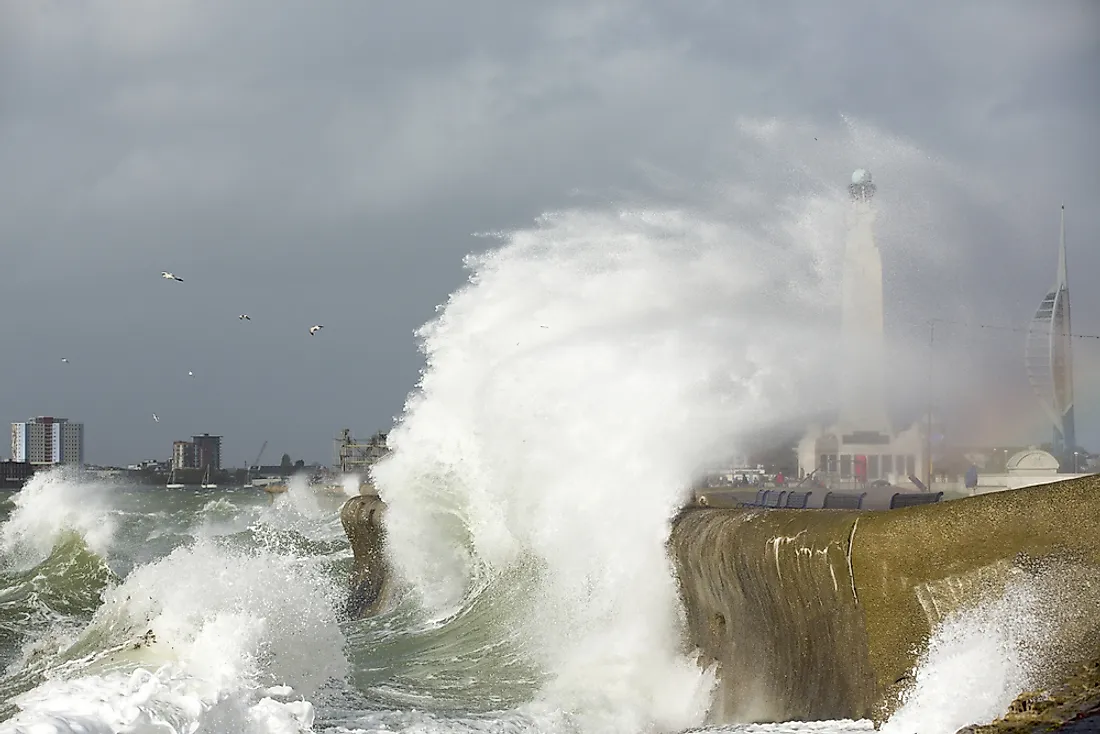What Is A Sea Wall?

A seawall is a form of coastal shielding that provides protection to any structures and settlements close to the coast from sea action and processes such as tides and tsunamis. Instead of the coast being exposed, the seawall will be exposed to all sorts of coastal processes such as erosion. Despite providing protection, a seawall conflicts with the active nature of the sea and comes between the interaction between land and sea. Since these processes battering a seawall are constant, the seawalls need to be maintained frequently or replaced so that they can function properly.
The type of seawall constructed will depend on a number of factors such as the nature of the forces they have to endure, the climate, the type and strength of waves, and other factors. Unfortunately, their effectiveness comes at a cost such as the disruption of the movement of sediments, high costs of construction, as well as the disruption of transport patterns. For this reason, most coastal authorities are now resorting to other forms of coastal protection and management such as the replenishing of beaches. While these other softer forms are less effective, they are softer on the cost of maintenance and the cost to the environment.
Types of Seawalls
A seawall, if poorly constructed, will bring more harm than good. For example, while it may reduce erosion in one place, it may actually increase erosion in nearby unprotected areas. Before constructing a seawall, an analysis of the area needs to be done and the appropriate type of seawall determined. The seawall may be vertical, curved (or stepped), or a mound type. In some places, the sea walls are simply natural barriers such as coral reefs or vegetation.
Vertical ones are constructed in places where the coastal line is exposed too much. The vertical ones work by reflecting wave energy back into the sea. A curved seawall is most effective and suitable in places where the energy of the waves needs to be broken down. Lastly, the mound types are mostly used in areas where the waves have lower energy levels, that is, places where the erosion action is low.
Tsunamis and Seawalls
A particularly dangerous coastal process that has wrecked havoc to susceptible parts of the world is the tsunami. Thankfully, seawalls have been proven to be effective in reducing the damage caused by tsunamis. For example, the United Nations Environment Program established that the tsunami that hit Sri Lanka on December 26, 2004, was less damaging in areas that were protected naturally.
In Japan, seawalls have also proven useful in providing adequate time for residents to be evacuated. However, they have been overwhelmed a number of times because of the sheer power of the tsunamis. In 2004, an old seawall proved effective in stopping a tsunami that killed thousands in unprotected places in the territory of Pondicherry.
Examples Around the World
Some of the notable examples from the world include the likes of the Constantinople sea walls, which have stood since the era of the Romans, the Alaskan Way Seawall, the Sea Bright–Monmouth Beach Seawall, the Gold Coast Seawall, and others.











